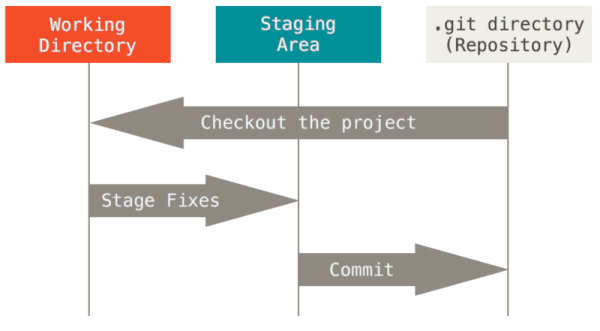📝
This post is part of my “Shorts” series, where each post is concise and hyper-focused on a single concept.
Continuing with my exploration of Git, this post will try to formalise the knowledge around the states of Git. As a developer, you may already be using them in your workflow.
ℹ️
This post refers to the term “version database” repeatedly. It simply is a database that Git maintains to
store the versions of files in your version-controlled repository. Read more about it in this
post.
The three states
modified: This means that the file has been modified, but not committed (saved) to the version database.staged: This means that you have marked the modified file in its current version to be saved to the version database when you make you next commit.committed: This means that the current version of the file has been saved to the version database.
These three states give way to three sections of a Git project.
The three sections
- Working tree: This is a single version of your project checked out, where you can make some meaningful modifications to build a world-conquering application. Usually, it is the latest version, but you may have checked out a previous version which then becomes the working tree.
- Staging area: It stores information about which modified files will be part of your next commit (or saved into the version database).
- Git directory: Basically, it stores all information on your version-controlled repository, maintains the version database, stores any related metadata. This is the most important part of Git, and is duplicated when a repository is “git-cloned”.

A typical Git workflow. Image courtesy
Final words
With a formalised knowledge of the three states/sections of Git, a typical Git workflow would like:
- Modify files in the working tree.
- Select the files you want to move to the staging area.
- Commit - Store a snapshot of the current version permanently to the Git directory.
As I have written above, you have probably interacted with all the three states/sections of Git. Yet, I believe it is always helpful to be aware of what exactly is going on. This builds an appreciation for the effort put behind the development of tools, like Git.